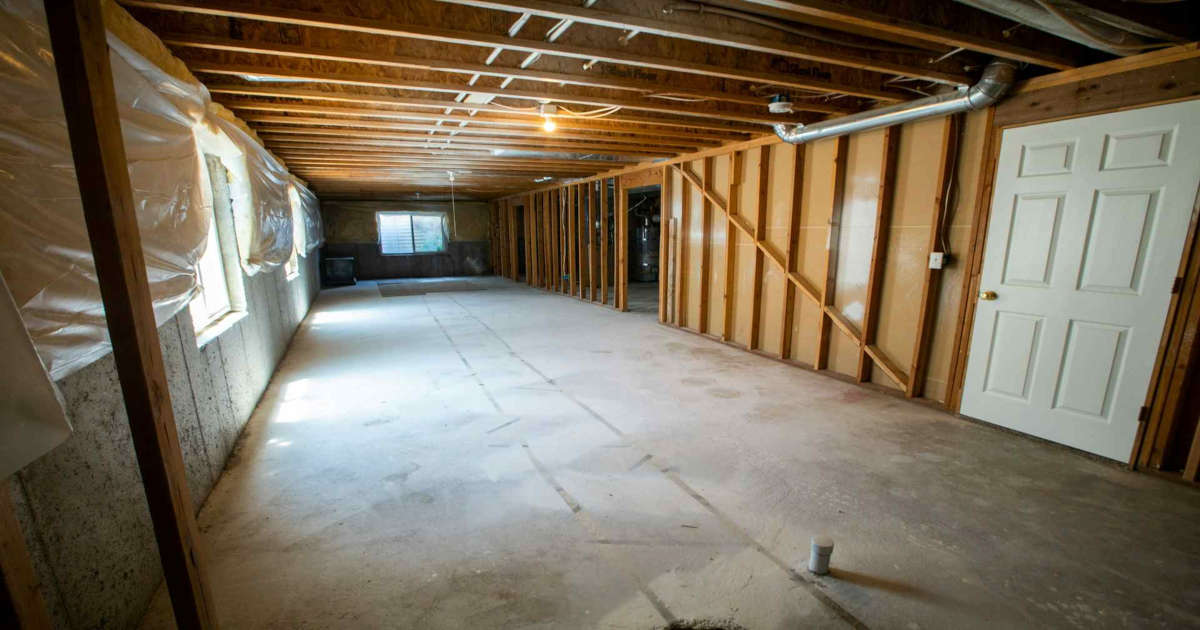10 Basement Waterproofing Solutions That Really Work
Posted by Steven on October 08, 2025

Water in your basement can spell trouble. If it’s not dealt with properly, it can lead to mold growth, wood rot, and even foundation damage. To prevent costly repairs and protect the structural integrity of your home, waterproofing of the basement is essential.
In this guide, you’ll learn how to identify moisture problems, where water is entering, and 10 interior and exterior basement waterproofing solutions that really work.
What Causes Water in Your Basement?
Understanding the source of basement water problems is the first step toward resolving them. Common causes include:
- Cracks or seepage in foundation walls
- Groundwater pressure buildup (hydrostatic pressure)
- Landscaping that slopes toward the house
- Blocked or undersized gutters and downspouts
- Poor drainage around the foundation
How to Spot Water Damage in Your Basement
If you notice any of the following signs, your basement may need waterproofing:
- Condensation on windows or doors
- Damp spots on walls and floors
- White, chalky residue (efflorescence)
- Musty smells or visible mold
- Peeling paint or wallpaper
- Swollen or misaligned doors and windows
- Rotted or warped wood
How to Inspect Your Basement for Moisture
Interior and Exterior Areas to Check for Leaks
Before starting any basement waterproofing project, conduct a thorough inspection, ideally during or right after heavy rain. Outside, look for visible cracks in the foundation, signs of erosion or pooling water, and ensure the grading slopes away from the house. Inside the basement, check for wall and floor stains, dampness, efflorescence, ceiling water spots or sagging, and inspect hidden areas for mold or mildew. Use a hygrometer to monitor indoor humidity levels.
Common Water Entry Points in Basements
Identifying water entry points is crucial to targeting your waterproofing efforts effectively. Common problem areas include cracks in foundation walls or floors, gaps around basement doors and windows, openings for utility lines or pipes, poorly sealed sump pump basins, and cove joints where the walls meet the floor.
5 Outdoor Fixes to Keep Water Away from Your Foundation
Taking preventive action outside your home is crucial to maintaining a dry basement. Here are five effective exterior waterproofing methods to waterproof your basement from the outside:
- Improve Yard Grading
Make sure the soil around your home slopes away from the foundation at least 6 inches over 10 feet. Add soil or regrade the yard to prevent water pooling near the base of your home.
- Install or Extend Downspouts
Downspouts should direct water at least 4 to 6 feet away from the house, 10 to 15 feet is ideal. Also, keep gutters clean or install gutter guards to avoid clogs.
- Install a French Drain
A French drain is a gravel-filled trench with a perforated pipe that redirects groundwater away from the foundation. This is a more involved project that often requires professional installation but offers long-term benefits.
- Seal Window Wells
Install clear covers over basement window wells to keep out rain and debris. Consider adding window well drains to direct water away.
- Apply Exterior Coatings and Membranes
Excavate around the foundation, seal cracks, and apply a waterproof membrane. A drainage board can also be added for extra protection before backfilling the soil.
5 Indoor Fixes to Stop Water and Control Humidity
If water has already found its way inside, these interior basement waterproofing strategies can help manage and prevent further damage:
- Install an Interior Drainage System
Dig a trench around the basement's interior perimeter, place a perforated pipe inside, and direct water to a sump pump. Cover with gravel and concrete to restore the floor.
- Install a Sump Pump (with Battery Backup)
A sump pump automatically removes water collected in the drainage system. Opt for a model with a battery backup to ensure it works during power outages.
- Repair Cracks with Injections
Use epoxy or polyurethane injections to seal non-structural cracks in basement walls or floors. This helps prevent future seepage.
- Apply Waterproof Coatings to Basement Walls
To waterproof basement walls, apply waterproof paint or silicate-based sealers for added protection. These are great for blocking moisture in porous surfaces, but aren’t standalone solutions for major leaks.
- Add a Dehumidifier
Keep humidity levels below 50% with a high-capacity basement dehumidifier. This helps prevent mold, mildew, and musty odors and improves air quality.
Final Tips for Waterproofing Your Basement
Some basement waterproofing tasks, like applying sealers or installing a dehumidifier, are easy DIY projects. However, larger jobs like French drains, sump pumps, or exterior membrane applications often require professional tools and expertise. If you're unsure, consult a specialist in basement waterproofing.
Frequently Asked Questions About Basement Waterproofing
Q: How much does it cost to waterproof a basement?
Costs can range from $500 for basic fixes to over $10,000 for full exterior excavation and membrane installation.
Q: Can I waterproof my basement myself?
Yes, for smaller jobs like sealing cracks, improving grading, or installing a dehumidifier. For more complex projects, it's best to hire a professional.
Q: How long does waterproofing last?
Interior coatings may last 5-10 years, while professional exterior systems can last 20+ years with proper maintenance.